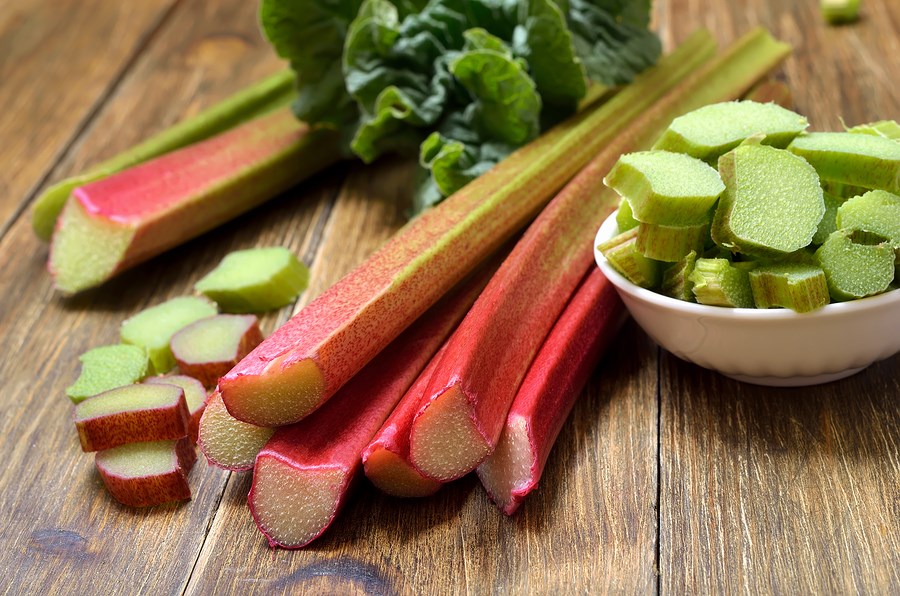If this year follows the pattern of previous years, there will soon be requests from a number of people for rhubarb, either to grow or to use. Although it is grown commercially, rhubarb is rarely available in grocery stores. Primarily used as a fruit in desserts, cakes, pies and preserves, this plant is actually classified as a vegetable.
Rhubarb originated in east Asia, likely Mongolia, so it is a hardy northerner. The earliest recorded use of rhubarb is 2700 BC, although its use is thought to date back much further. The dried root was used as a prized medicinal laxative by the ancient Chinese, and later the Greeks and the Romans. The stalks were not used as food until the early 1800s. The leaves are considered poisonous because they contain high levels of oxalic acid, which, when eaten, binds with calcium in the body to produce calcium oxalate, forming kidney stones. However, you would have to eat a lot of rhubarb leaves to poison yourself.
Rhubarb needs a sunny, weed-free spot with well-drained soil ammended with composted manure to thrive. You want a deep, wide planting hole. Plant the roots with the crowns one to two inches below the surface, spreading out the roots. Water well, but do not let water sit on top of the crowns. Rhubarb needs a lot of water, so a regular watering schedule is necessary. Fertilize every spring with a layer of composted manure around the plant, but not on top of the crowns.
Remove flower stalks as soon as they appear to have the plant to put its energy into producing leaf stalks, not seeds. Rhubarb is not bothered by insect pests, but it can suffer from crown rot if there is not sufficient drainage. Keep the area weed-free to keep your plant healthy and vigorous.
Do not harvest any stems the first year after planting – give your rhubarb a chance to get established. In the following years you can pick stems as long as stems are thick and robust, leaving at least two strong stems per plant. Stop picking if stems become thin, which indicates that the roots need to build up their food reserves. In the fall remove stems and leaves that have died.
To harvest rhubarb stems, grasp the base of the stalk and pull with a gentle twist. If this does not work for you, you can cut the base of the stalk. Remove the leaves – they can be added to your compost. Then enjoy your early harvest in your favourite rhubarb recipes.




